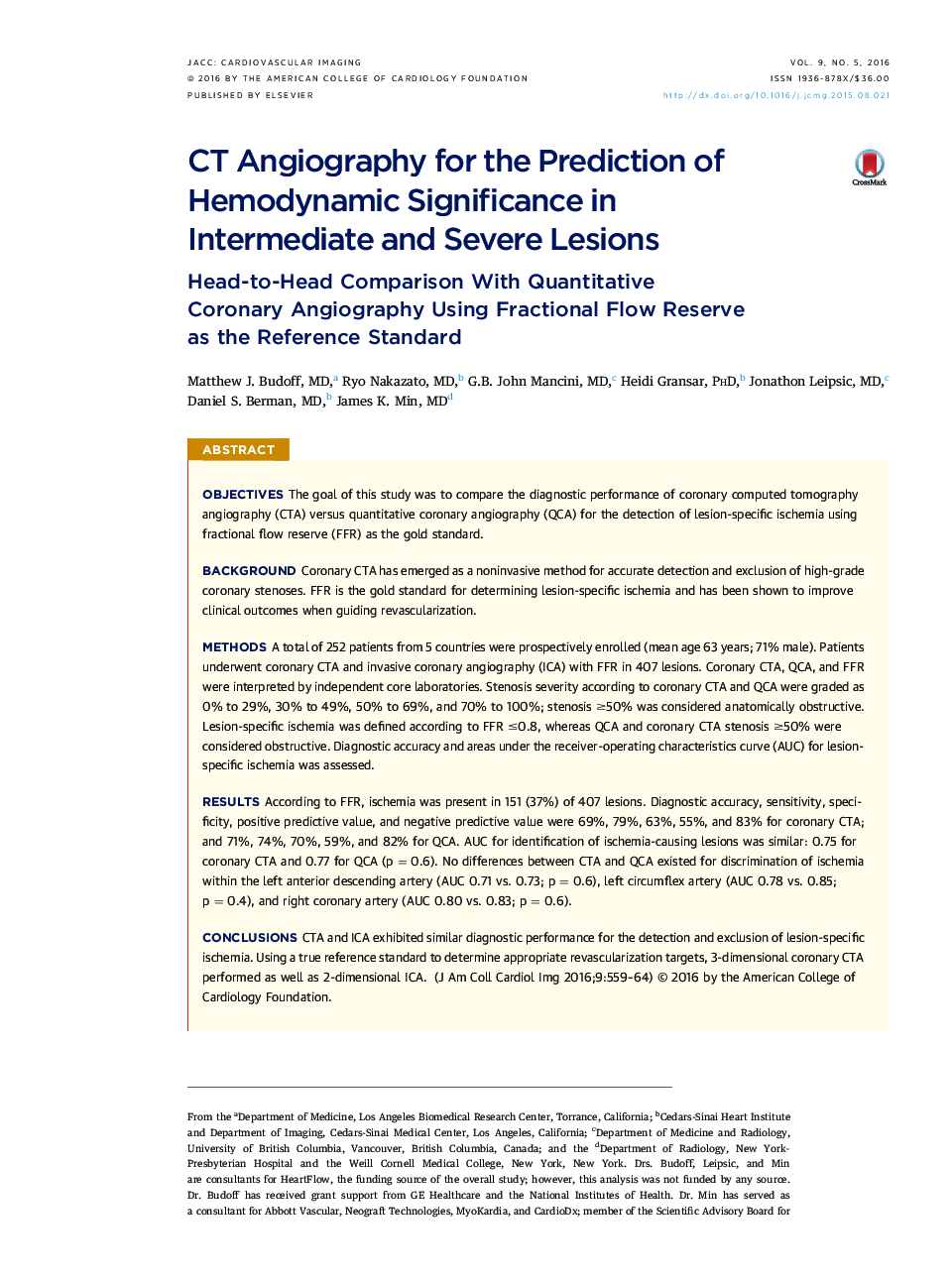| کد مقاله | کد نشریه | سال انتشار | مقاله انگلیسی | نسخه تمام متن |
|---|---|---|---|---|
| 2937731 | 1176898 | 2016 | 6 صفحه PDF | دانلود رایگان |

ObjectivesThe goal of this study was to compare the diagnostic performance of coronary computed tomography angiography (CTA) versus quantitative coronary angiography (QCA) for the detection of lesion-specific ischemia using fractional flow reserve (FFR) as the gold standard.BackgroundCoronary CTA has emerged as a noninvasive method for accurate detection and exclusion of high-grade coronary stenoses. FFR is the gold standard for determining lesion-specific ischemia and has been shown to improve clinical outcomes when guiding revascularization.MethodsA total of 252 patients from 5 countries were prospectively enrolled (mean age 63 years; 71% male). Patients underwent coronary CTA and invasive coronary angiography (ICA) with FFR in 407 lesions. Coronary CTA, QCA, and FFR were interpreted by independent core laboratories. Stenosis severity according to coronary CTA and QCA were graded as 0% to 29%, 30% to 49%, 50% to 69%, and 70% to 100%; stenosis ≥50% was considered anatomically obstructive. Lesion-specific ischemia was defined according to FFR ≤0.8, whereas QCA and coronary CTA stenosis ≥50% were considered obstructive. Diagnostic accuracy and areas under the receiver-operating characteristics curve (AUC) for lesion-specific ischemia was assessed.ResultsAccording to FFR, ischemia was present in 151 (37%) of 407 lesions. Diagnostic accuracy, sensitivity, specificity, positive predictive value, and negative predictive value were 69%, 79%, 63%, 55%, and 83% for coronary CTA; and 71%, 74%, 70%, 59%, and 82% for QCA. AUC for identification of ischemia-causing lesions was similar: 0.75 for coronary CTA and 0.77 for QCA (p = 0.6). No differences between CTA and QCA existed for discrimination of ischemia within the left anterior descending artery (AUC 0.71 vs. 0.73; p = 0.6), left circumflex artery (AUC 0.78 vs. 0.85; p = 0.4), and right coronary artery (AUC 0.80 vs. 0.83; p = 0.6).ConclusionsCTA and ICA exhibited similar diagnostic performance for the detection and exclusion of lesion-specific ischemia. Using a true reference standard to determine appropriate revascularization targets, 3-dimensional coronary CTA performed as well as 2-dimensional ICA.
Journal: JACC: Cardiovascular Imaging - Volume 9, Issue 5, May 2016, Pages 559–564